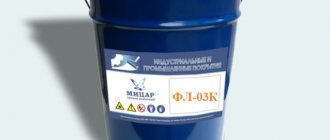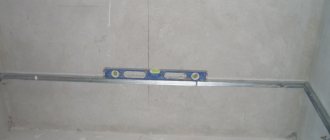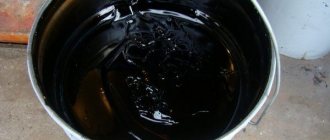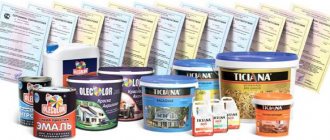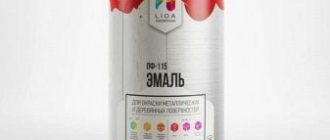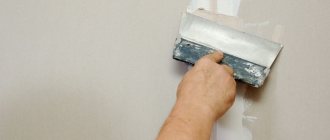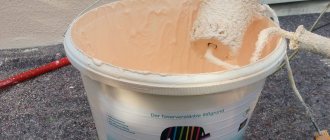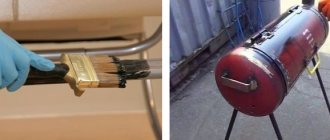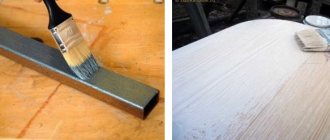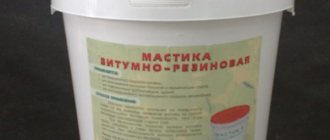Water supply heating installation services
LLC DESIGN PRESTIGE 8(495)744-67-74
In addition to fast and high-quality repair of heating pipes, we provide professional installation of turnkey heating systems. On our heating page > resant.ru/otoplenie-doma.html < you can view and get acquainted with examples of our work. But to be more precise, it is better to check with an engineer about the cost of work and equipment.
To contact us, use the contact number of DESIGN PRESTIGE LLC 8(495) 744-67-74 , which you can call around the clock.
8.4 Determination of bending strength
The essence of the method is the destruction of the sample by a concentrated load applied in the middle of the span according to a single-span scheme.
8.4.1 Controls
A device of any design that provides the ability to apply a load according to the scheme shown in Figure 3, with a rate of load increase of 15-20 N/s (1.5-2.0 kgf/s) and has a device that allows you to measure the breaking load with an error of no more than 2% .
The supports and the part transmitting the load at the point of contact with the sample must have a cylindrical shape with a radius of 5 to 10 mm, the length of the supports and the part must be no less than the width of the sample.
Figure 3 - Scheme of bending strength test
8.4.2 Samples
The test is carried out on samples that have passed the tests in accordance with 8.3.
8.4.3 Test performance
Before testing, measure the thickness of the sample. The specimen is placed face up on the supports. The load is increased at a speed of 15-20 N/s (1.5-2.0 kgf/s) until the sample fails.
(Amendment, 05/07/2002)
8.4.4 Processing results
Ultimate bending strength Rbend, MPa, is calculated using the formula
, (2)
where F is the breaking load, N; b—width of the sample, mm; s—sample thickness, mm; 350 — distance between the axes of the supports, mm.
The bending strength of sheets of a given batch is taken as the arithmetic mean of the test results of three samples, and the test result of an individual sample must comply with the requirements of 5.2.2.
The calculation result is rounded to 0.1 MPa.
Special types of gypsum building boards
In addition to plasterboard and gypsum fiber boards, there are other types of gypsum-based building sheet materials:
- KNAUF-ACUBOARD. A special plasterboard sheet 16 mm thick with several layers of fiberglass (total thickness 4 mm) glued to the back side. Total thickness 20 mm. Gray cardboard, black markings, PLUK edge. Purpose - to increase the sound insulation of partitions and walls (increase from 5 to 9 dB).
- KNAUF-ACOUSTICS. Special perforated plasterboard sheet. Five types of perforation, three edge options. Used as sound-absorbing cladding for walls and ceilings to improve the acoustic comfort of a room.
- KNAUF-FIREBOARD. It consists of a gypsum core with special additives and a shell made of fireproof fiberglass. Non-combustible material for cladding enclosing surfaces. Also used for fire protection of structures, chimneys, ventilation and cable ducts. The task is to localize the fire in the room where the fire occurred. Area of application: workshops, garages, boiler rooms, cladding of walls and ceilings of evacuation passages in public buildings.
Subscribe
What is the difference between gypsum plasterboard and gypsum board
The differences between these two related building materials can be considered according to several criteria: structure, modifications, types of edge profiles, scope of application.
Differences in structure
The term “plasterboard sheet” itself is more of a tribute to tradition, or established professional slang. It can be found not only in everyday life or on the price tags of product items in construction stores, but also on the official website of the Russian branch of KNAUF. But if you follow the letter of the law (GOST 32614-2012, section 7), since January 2015 the correct name sounds like “gypsum building board” , and the letter designation of the marking looks like “GSP”. Although even now most texts on the Internet use the old abbreviation “GKL”.
The old name more accurately reveals the structure of the gypsum building board. By definition, GSP (gypsum plasterboard) consists of a gypsum core and a shell made of thick cardboard (although the shell is not solid - the transverse ends are open).
Cardboard acts as a reinforcing element and serves as the basis for applying finishing: plaster, tiles, wallpaper, paint. And the properties of the boards, as well as the scope of application, depend on the type of special additives in gypsum and cardboard.
Gypsum fiber sheet (GOST R 51829-2001) is a pressed board without a shell.
To increase strength and fracture resistance, fluffed cellulose fibers are added to the gypsum mixture. If we draw an analogy with other building materials, then GVL is structurally a “relative” of fiber cement panels and slate. And the operating conditions depend on the additives.
Execution options (modifications)
There are several types of gypsum boards. Each of them has a specific set of properties. In their “pure” form there are eight types, and they are marked in Latin letters:
- type A - ordinary, for rooms with dry and normal humidity conditions;
- type H - moisture resistant, with additives that reduce water absorption, three versions (H1, H2, H3);
- type E - with low water absorption and minimal vapor permeability, for cladding external structures (without decorative coating);
- type F – with increased resistance to open flames and high temperatures;
- type D - with a given density (for certain operating conditions);
- type R - with increased bending strength;
- type I – with increased surface hardness.
Recommendations for selection depending on the place of use
The criteria for selecting materials are best illustrated using KNAUF products as an example. It was its specialists who were directly involved in the development of regulatory documentation for plasterboard and gypsum fiber sheets: GOST 32614-2012 and GOST R 51829-2001.
Plasterboard sheets
In total, the company’s product range includes five types of plasterboard sheets:
- SHG— Gray cardboard, black markings, PLUK edge. It is used in normal and dry humidity conditions - in living rooms, bedrooms, studies, office premises.
- GSP-H2, moisture resistant. The core contains hydrophobic additives (silicone). Green cardboard, black markings, PLUK edge. Used in any humidity conditions according to SNiP 02/23/2003. The main scope of application is bathrooms, toilets, kitchens.
- GSP-DF, fire resistant. The core contains glass roving. The cardboard on the front side is pink, the back side is gray, the markings are black, the edge is PLUK. Used in dry and normal humidity conditions. The goal is to increase the fire resistance limit.
- GSP-DFH2, moisture and fire resistant. The cardboard on the front side is green, the back side is gray, the markings are black, the edge is PLUK. Can be used in any humidity conditions. The goal is to increase the fire resistance limit.
- GSP-DFH3IR (SAPHIRE), moisture- and fire-resistant sheet of increased density, strength and hardness. Blue-gray cardboard, black markings, PLUK edge. Can be used in any humidity conditions. The goal is to increase the fire resistance limit and construct structures with higher surface strength to mechanical stress.
Note. The sizes of standard sheets can vary widely. But on the company’s website, the main size is usually indicated as 2500x1200 mm.
In addition to the five main types, the KNAUF company produces two additional small-format types GSP-A and GSP-H2. They are intended for repair and restoration work on finished surfaces or for covering walls and small structures when using a large format is impractical.
